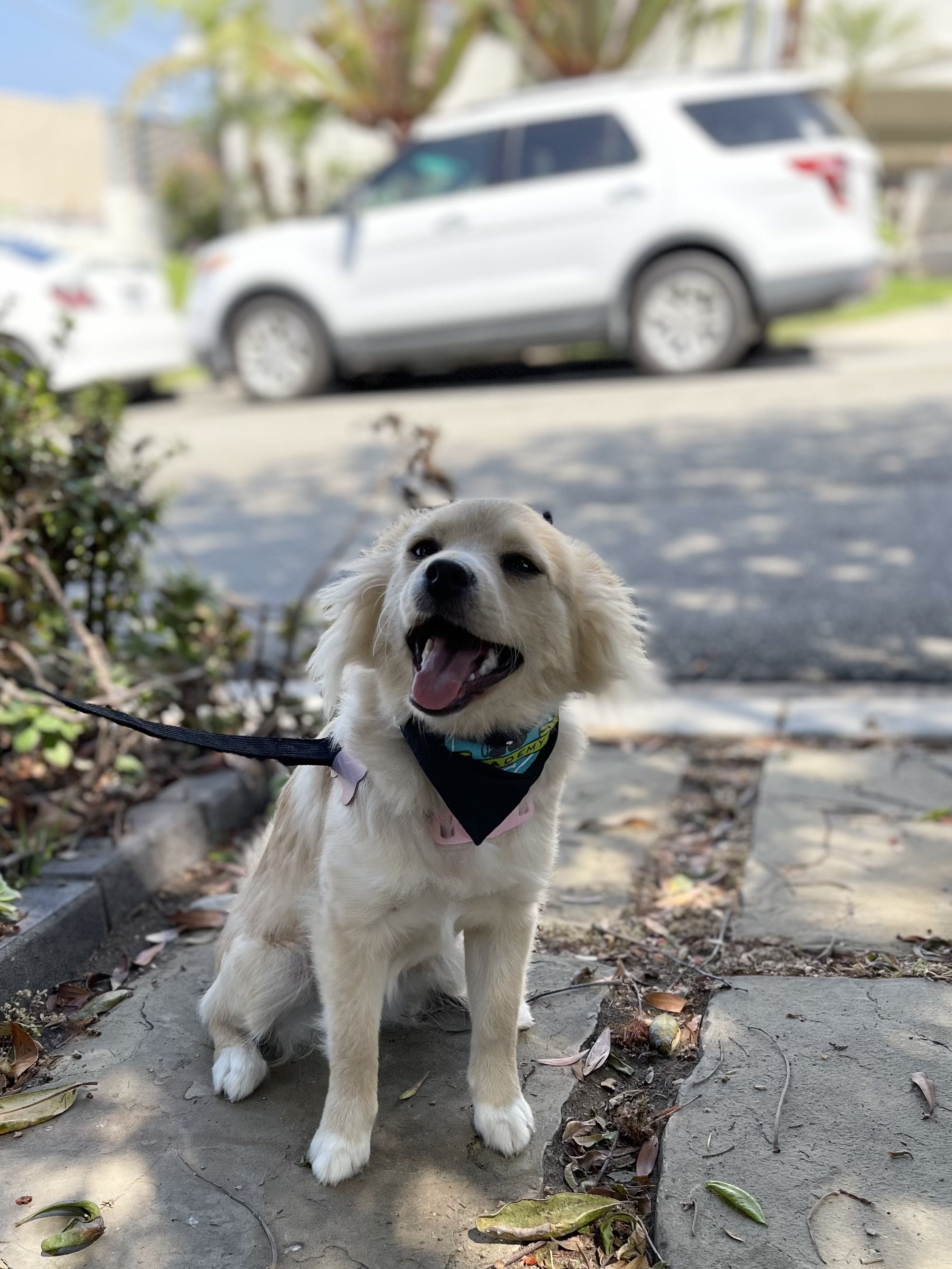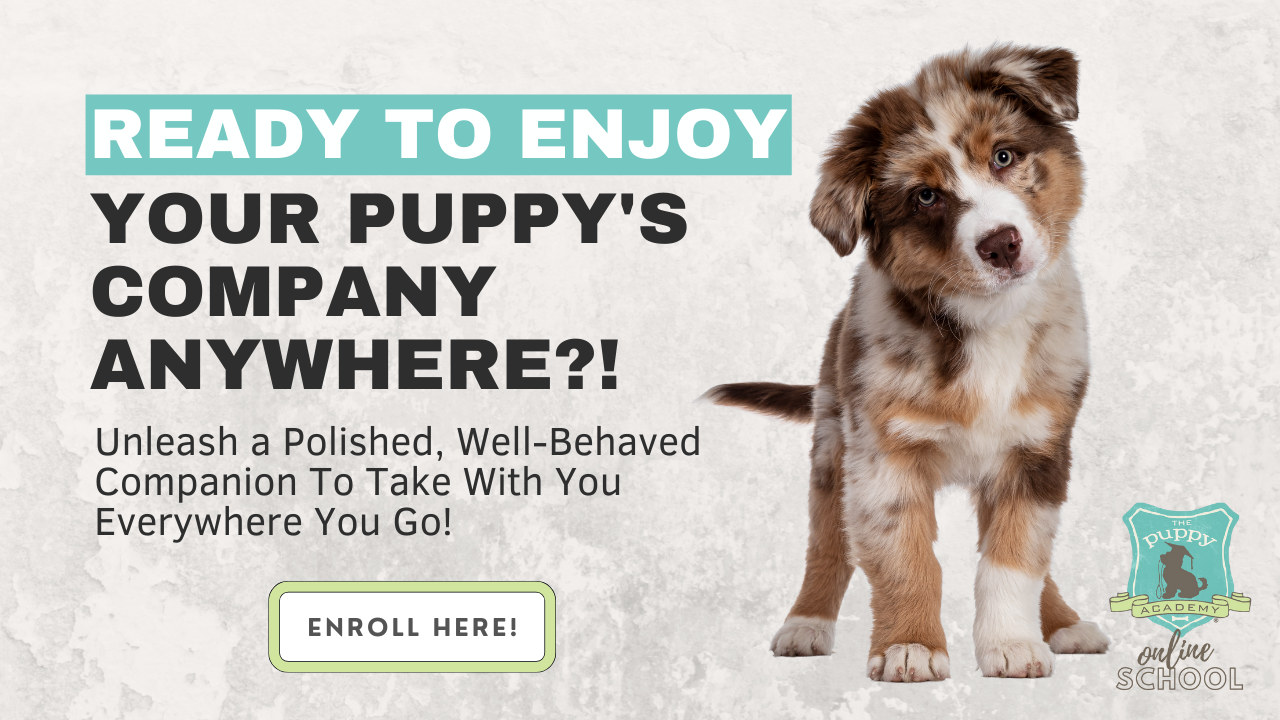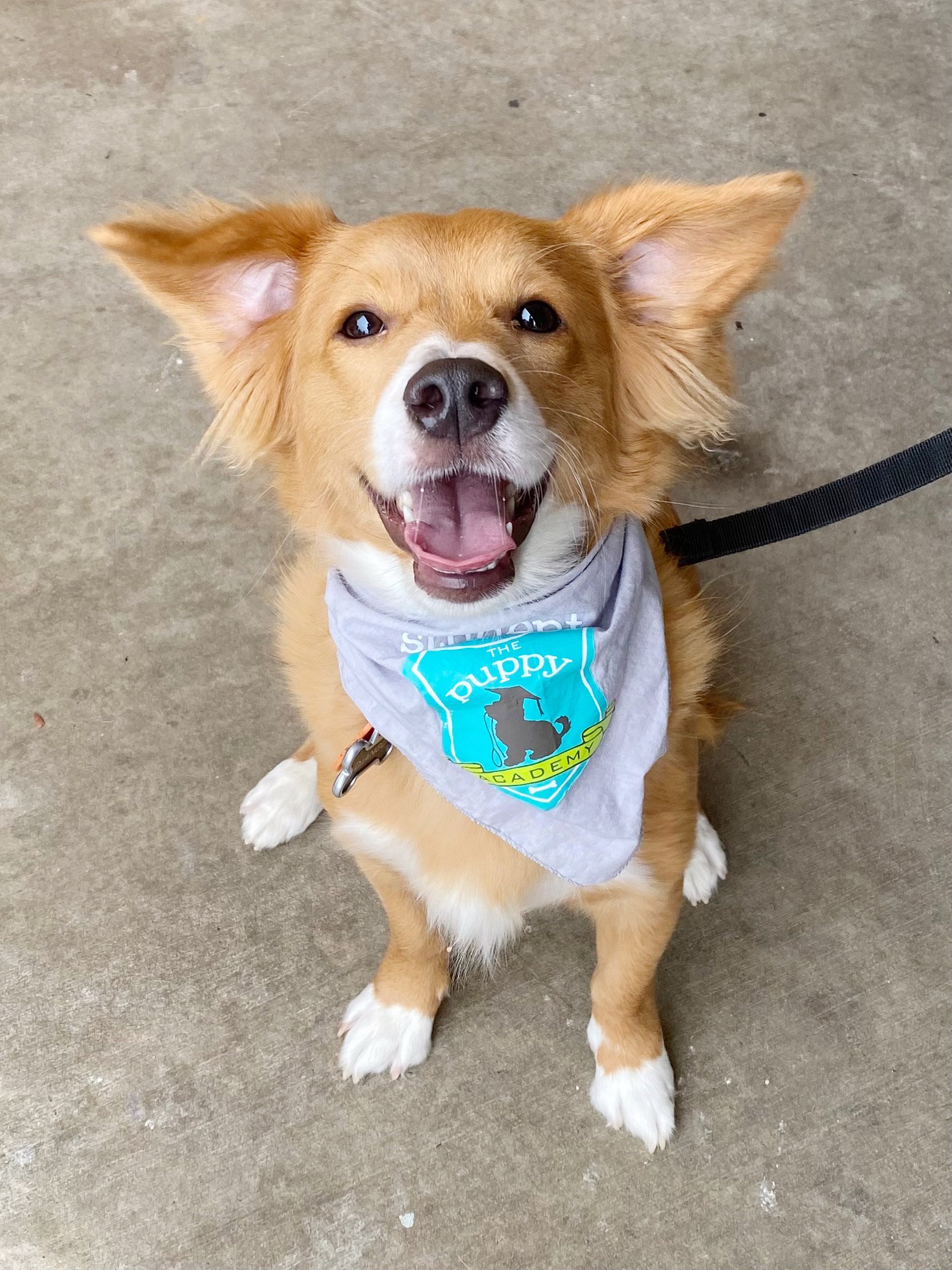Using a car is a normal daily activity for many of us, but where driving may come as second nature to us, it’s a totally new experience for a young puppy! Whether you’re planning ahead for your puppy’s first car ride to their new home, want them to accompany you while you’re driving around town, or are planning a roadtrip with your puppy, we want to make sure it’s a stress-free and enjoyable time for them!
In this blog we’ll cover puppy car safety tips, how to train a puppy for car travel, puppy car anxiety and puppy motion sickness tips, and how to get your puppy used to car rides quickly! Buckle up, here we go!
In their first year, your puppy will experience many firsts such as going to their first vet visit, their first walk, first bath (document all these “firsts” in the cutest way here!), and let’s not forget building their bond with their family -- it’s an exciting time! Some of these activities come easily to a puppy while others require more guidance and patience.
Riding in a car isn’t a natural thing for most puppies, it needs to be taught. Doing so can help avoid future adult dog anxiety, car sickness, and fear. Luckily, puppies are fast learners and quickly adapt to their environment and routines with the right techniques! Here’s how to get your puppy to love the car!
Safety First
Before jumping in for their very first car ride, take some safety precautions to ensure the well-being of your puppy:
Secure Your Puppy with a Crate, Harness, or Car Seat!
Don’t let your puppy wander around freely in the car or sit in your lap. Not only can it be very distracting for the driver, but in the event that you need to stop short, this could be extremely dangerous for your puppy. You’ll want to make sure they’re safely secured by either placing them in a car crate, puppy carseat, or puppy car harness.
While wanting your puppy in the front seat is tempting, the safest location to secure your puppy is in the back seat of your car, which also helps you to avoid a possible distraction while driving!
Head and Paws Inside the Car at All Times
Open car windows, especially when the car is moving, can be very dangerous. We know many pups love to have their head out the window, but there’s serious risk involved. Their eyes could be struck by dirt and debris, their ears could be damaged from the high-wind speeds, and pups have been known to fall out or even jump out of moving vehicles.
Keep your puppy safely secured inside the car and crack the window a couple of inches to let in the fresh air, which can also help them if they experience car sickness.
Puppy Car Ride Training
Learning to ride in a car is just another desensitization experience for your puppy! Here are simple to follow steps to get them comfortable with riding in your car:
First, simply get them used to going in and out of the car. The best way to introduce anything new to a puppy is by making it a game! It’ll help your puppy create a positive association with going into the car. Here’s how:
Have your puppy sit in front of the open car door while holding their leash. Use high-value food or treats, or their favorite toy, and coax them to jump into the car (or pick them up and place them in the seat if they are on the smaller side).
Give your puppy a little time to sniff around in the seat, familiarize themselves with their new environment and give them the reward to build a positive association with getting into the car.
Next, have your pup sit again so they don’t bolt out of the door (this is teaching calm threshold practice!), grab their leash, encourage them to jump out (or lift them if they’re small), and praise them when they’re back on the ground outside of the car!
Repeat steps 1 through 3!
By doing this little exercise your puppy will start to build confidence that getting into the car is fun and rewarding! Also, having them sit and wait before jumping in or out will lessen the chance your puppy will be anxious or over-excited about the car and can prevent puppy car anxiety for future car rides.
If your puppy simply refuses getting into the car, you can try sitting in the car first and have your puppy come to you. Some puppies just don’t want to go somewhere without their owner, so it’s up to you to guide them!
You can also open both back doors and have someone stand on one side and you on the other. Have your puppy jump in and out, using a long leash to guide them, for treats! Do this a few times as a puppy training session until your puppy feels comfortable jumping into the car on their own.
Sometime puppies need to build more confidence to improve their car-riding experience. For more help to make car rides easier for you and your puppy, check out our Online Puppy School!
We cover how to desensitize your puppy to new sensory experiences like traffic noises, street construction, and passing other pups and people to help make car rides calmer. (If you’ve got a car barker, we’ll show you how to fix that!) Plus you’ll learn training routines that will not only improve your car rides but also make your outings with your puppy a breeze!
Get all the details and sign up to start today here: The Puppy Academy Online School.
The First Car Ride
If possible, start with a short car ride for the first time. And remember to take it sloooow! Use a slow speed and turn corners slowly so your puppy is able to relax and help avoid car sickness. To make them more comfortable, sit with them in the back with them secured either in a crate, puppy car seat, or car harness, and give your pup treats along the way. This will help create a positive association with the car moving. Car rides = fun!
If your puppy starts to whine, don’t baby talk to comfort them. Instead, remain calm and ignore them until they settle down, and then give them a treat for doing so well in the car!
NOTE: Puppies, especially teething pups, like to chew! Make sure to keep an eye on your puppy as much as possible to ensure they aren’t chewing through their harness or seat belt! Bring a chew toy along to keep them occupied!
To help you further, here’s a shortlist of some things to bring along for your puppy’s first car ride:
Treats to reward your puppy during the ride
A chew toy or two to keep them occupied and avoid them chewing up their harness or seatbelt
Cleaning supplies in the event your puppy gets a little car sick
A blanket to cover their crate or to make them comfier
Car Sickness
Inevitably there are going to be some puppies who get a little car sick on their first ride. It’s a brand new sensation and many puppies have sensitive stomachs that can become upset by motion.
To avoid a possible accident in your backseat, don’t give your puppy food or water right before the trip (allow 2-3 hours after food and water to ensure they don’t have a full stomach for the car ride), and let them go potty before jumping into the car.
Other things you can do to alleviate a car sick pup is have them sit, not lay down, in the middle of the back seat looking over the dashboard straight ahead. You can also block out the side windows with sunshades or if your puppy is in a crate, have it facing forward and cover it with a blanket. Cracking the window to let in some fresh air also helps!
Puppy Car Ride Do’s & Don’ts
Don’t miss this short video highlighting our top tips for car ride success with your puppy:
Give these tips a try and let us know how it goes! Ultimately, by spending some extra time giving your puppy the opportunity to become familiar and feel comfortable during car rides, you are creating a lifelong association that car rides are fun and stress-free!
If you need more help with introducing riding in a car to your puppy, join us for our next Ask A Puppy Trainer Show on Instagram and TikTok (@thepuppyacademy)! Each week we do a live Q&A every Wednesday at 1 pm PT with our expert trainers answering questions of all things puppy-related from puppy parents like you!
And you can sign up for our Very Important Puppy (VIP) list to receive weekly puppy training delivered right to your inbox!
Check out these puppy training blogs!











